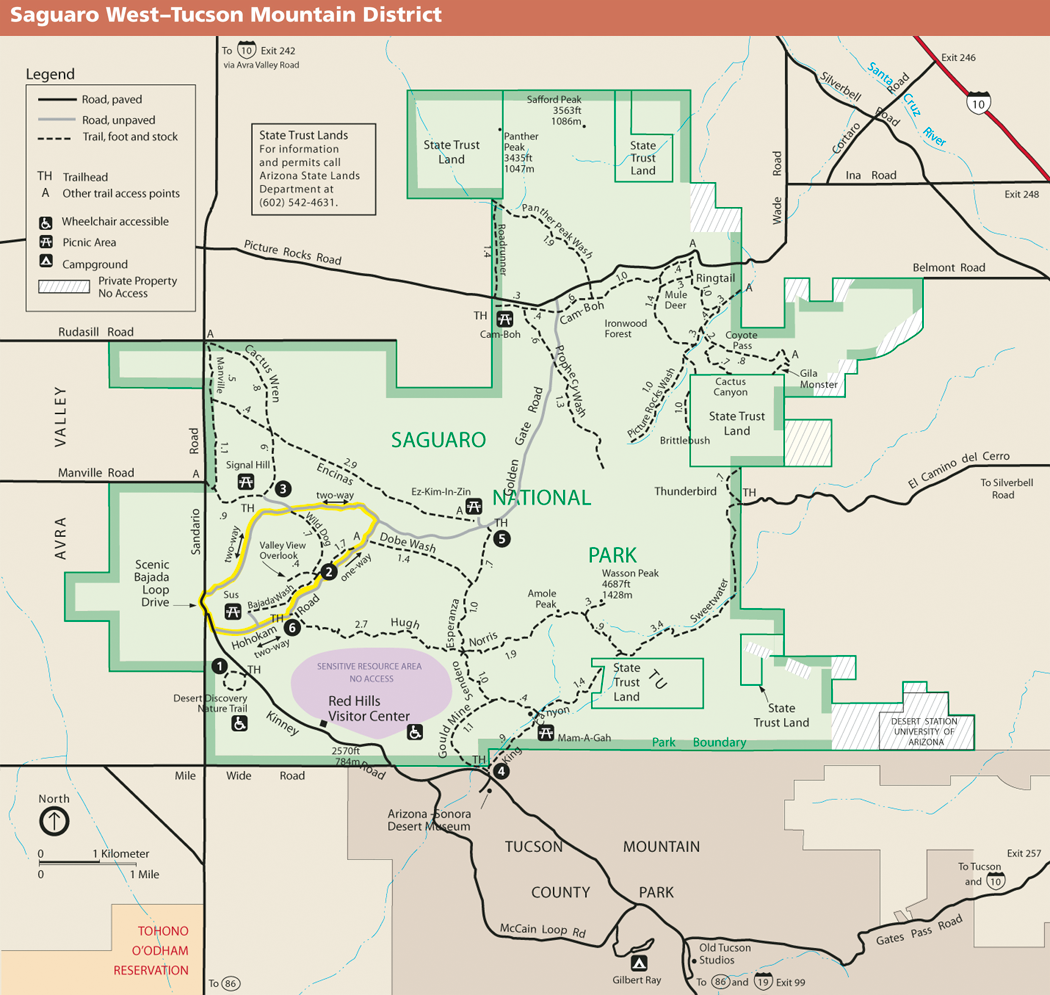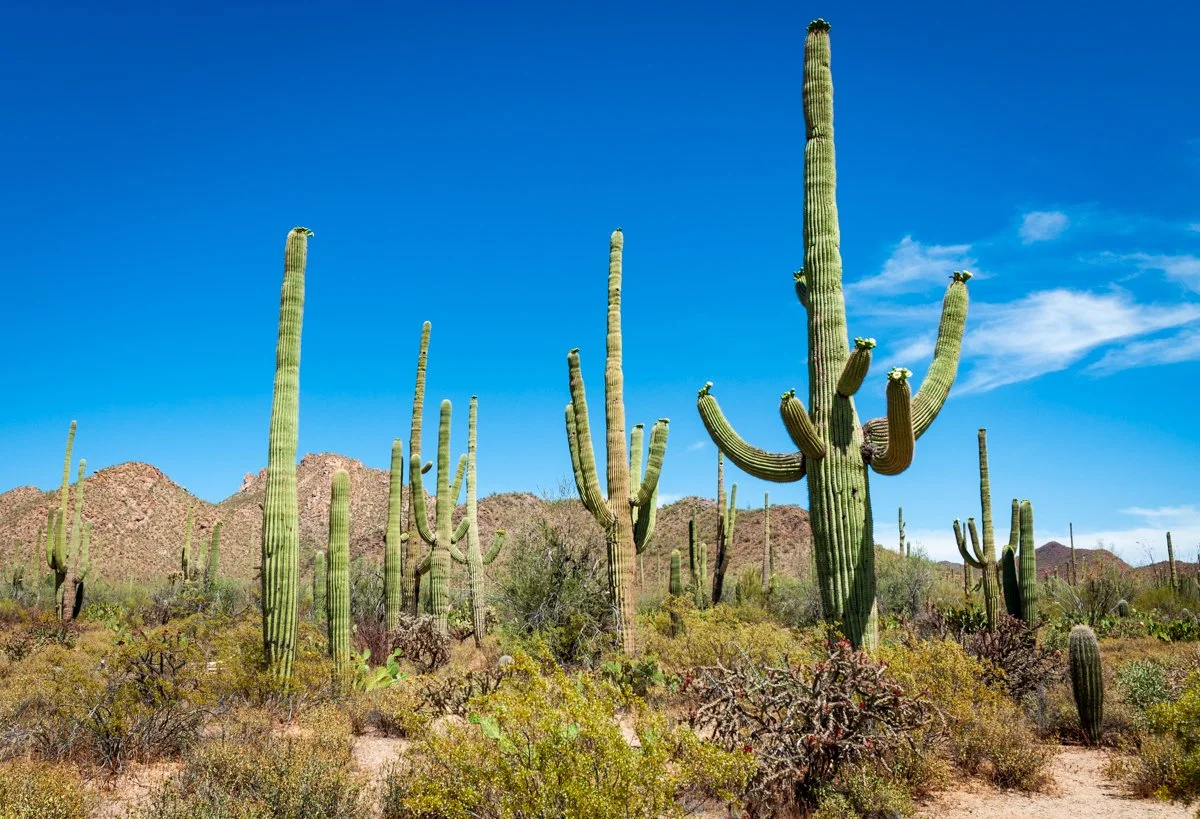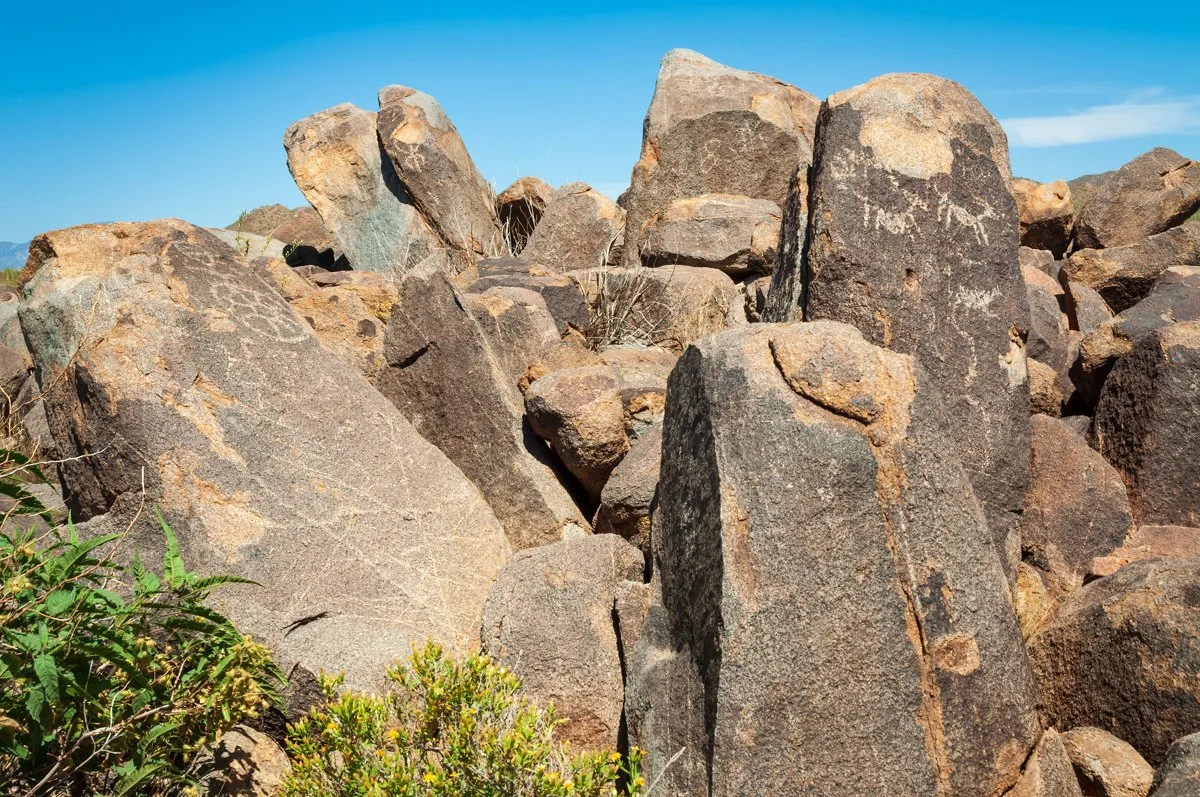Saguaro National Park (Arizona)
Saguaro National Park, encompassing the outskirts of Tucson, Arizona, showcases a remarkable landscape adorned with the towering, iconic saguaro cactus. This captivating park, revered for its exceptional desert beauty and unique flora, invites visitors to discover the extraordinary resilience and allure of the Sonoran Desert.
Established as a national park in 1994, Saguaro National Park spans over 91,000 acres and is divided into two districts: the Tucson Mountain District to the west and the Rincon Mountain District to the east. The park's namesake, the saguaro cactus, dominates the landscape, reaching heights of up to 60 feet and serving as a symbol of the American Southwest.
The Sonoran Desert's distinctive environment supports an impressive variety of plant and animal life. In addition to the park's iconic saguaro cactus, visitors can encounter barrel cactus, ocotillo, and palo verde trees, creating a rich mosaic of desert flora. The park is also home to diverse wildlife species, such as Gila woodpeckers, desert tortoises, and elusive mountain lions.
Saguaro National Park offers a range of recreational activities that allow guests to fully appreciate the beauty and resilience of the desert landscape. Over 165 miles of trails wind through the park, providing hikers the opportunity to explore the cactus forests, venture into the Rincon Mountains, or witness stunning desert sunsets. Other popular activities include wildlife viewing, photography, and ranger-led programs that delve into the park's natural and cultural history.
The vibrant city of Tucson, located just beyond the park's borders, offers a variety of accommodations, dining options, and local attractions for visitors. With its rich cultural heritage, lively arts scene, and nearby natural wonders, Tucson ensures that every guest can enjoy the beauty of Saguaro National Park in comfort and style.
MUST SEE SITES
Cactus Forest Loop Drive: This scenic drive offers stunning views of the park's iconic saguaro cacti and other desert flora, as well as opportunities for hiking and wildlife viewing. Visitors can explore the area by driving the scenic route, attending a ranger-led program, or simply taking in the stunning views of the unique landscape.
Saguaro Wilderness Area: This remote area of the park offers opportunities for hiking, backpacking, and wildlife viewing, as well as stunning views of the surrounding desert landscape. Visitors can explore the area by hiking one of the park's trails, attending a ranger-led program, or simply taking in the stunning views of the unique landscape.
Signal Hill: This scenic area offers stunning views of the surrounding desert landscape, as well as opportunities for hiking and wildlife viewing. Visitors can explore the area by hiking one of the park's trails, attending a ranger-led program, or simply taking in the stunning views of the unique landscape.
Rincon Mountain District: This district of the park offers stunning views of the Rincon Mountains, as well as opportunities for hiking and wildlife viewing. Visitors can explore the area by hiking one of the park's trails, attending a ranger-led program, or simply taking in the stunning views of the unique landscape.
Mica View Trail: This scenic trail offers stunning views of the park's iconic saguaro cacti and other desert flora, as well as opportunities for hiking and wildlife viewing. Visitors can explore the area by hiking the trail, attending a ranger-led program, or simply taking in the stunning views of the unique landscape.
GETTING THERE
The most popular way to arrive at Saguaro National Park is by car. The park is located in southern Arizona, and can be accessed via several highways. From Tucson, you can take Interstate 10 to the park's entrance.
If you prefer to travel by air, the closest airport to Saguaro National Park is the Tucson International Airport, which is located about 30 minutes' drive from the park. This airport offers flights from several cities, including Los Angeles, Denver, and Chicago.
Once you arrive at Saguaro National Park, the best way to get around is by car or by foot. The park is home to several scenic drives and hiking trails, including the Cactus Forest Loop Drive and the Tanque Verde Ridge Trail. There are also several campgrounds available for overnight stays, and ranger-led programs and tours are offered throughout the year.
GATEWAY COMMUNITIES
The city of Tucson serves as the primary gateway community to Saguaro National Park, offering various accommodations, dining options, souvenir shops, and outdoor recreation equipment rentals.
ACCOMMODATIONS
Visitors can find various lodging options in Tucson, including hotels, motels, and vacation rentals. Additionally, there are several campgrounds available near the park, providing tent and RV sites.
CAMPGROUNDS
Saguaro National Park does not have any developed campgrounds within its boundaries. However, there are several campgrounds available in the nearby Coronado National Forest, offering tent and RV sites, as well as basic amenities like restrooms, drinking water, and picnic areas.
WEATHER/CLIMATE
Saguaro National Park has a desert climate, with hot summers and mild winters. Average summer temperatures can range from the 90s to over 100 degrees Fahrenheit, while winter temperatures can range from the 50s to 70s. Visitors should be prepared for potential rain during the summer monsoon season and high temperatures during the summer months.
RECREATION OPPORTUNITIES
Numerous recreational opportunities await visitors, including hiking, wildlife viewing, and exploring the park's unique desert landscape. The park offers miles of hiking trails, providing opportunities to explore the diverse landscapes and observe the iconic saguaro cactus. Popular hikes include the Valley View Overlook Trail, the King Canyon Trail, and the Tanque Verde Ridge Trail. Wildlife viewing is popular, with a variety of species such as Gila woodpeckers, roadrunners, and numerous reptiles inhabiting the area.
VISITOR CENTER
Saguaro National Park has two visitor centers, one for each district of the park: the Rincon Mountain District Visitor Center (east) and the Tucson Mountain District Visitor Center (west). These centers provide information about the park's history, ecology, wildlife, and recreational opportunities. Rangers are available to offer guidance and answer questions. The visitor centers are open daily, year-round, with some exceptions for major holidays or seasonal closures.
THINGS TO KNOW
Entrance Fee: $25 per vehicle (7-day pass), $20 per motorcycle (7-day pass), $15 per person (7-day pass), or $45 for an annual park pass.
Pet Policy: Pets are allowed in developed areas, picnic areas, and along roadsides, but must be leashed and under control at all times. Pets are not allowed on park trails, in the wilderness, or in buildings.
Hours of operation: Saguaro National Park is open 24 hours a day, 7 days a week. Visitor centers and certain facilities have specific operating hours, which can be found on the park's website.
Website: https://www.nps.gov/sagu/index.htm
Contact phone number: (520) 733-5153
Address: Saguaro National Park, 3693 S Old Spanish Rd, Tucson, AZ 85730, United States





